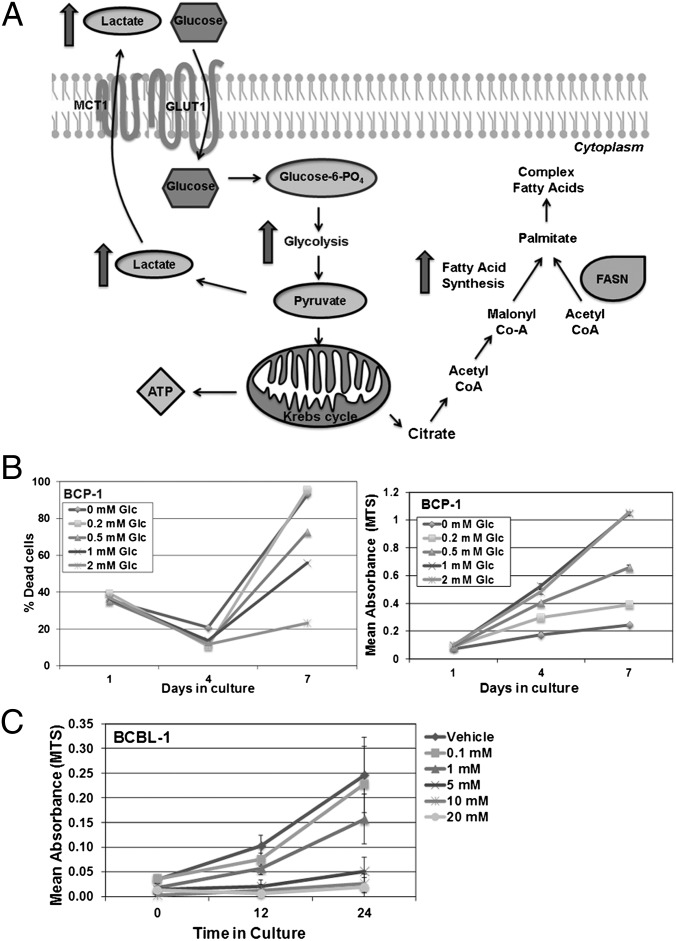Fig. 1.
Glycolysis and FAS pathways. (A) Once glucose (Glc) enters the cell through transporters such as GLUT1, hexokinase rapidly phosphorylates Glc into Glc-6-phosphate, which participates in glycolysis to generate 2 ATP. Pyruvate, the end product of glycolysis, is converted into lactate by lactate dehydrogenase and is secreted through monocarboxylate transporters (for e.g., MCT1). Alternatively, pyruvate can be further oxidized in the mitochondrion via the Krebs cycle to yield 36 ATP per molecule of Glc. Citrate, an intermediate metabolite, can exit the Krebs cycle and be transported into the cytoplasm, where it can be broken down into acetyl-CoA. Acetyl-CoA is converted into malonyl-CoA by acetyl-CoA carboxylase, which is the commitment step of FAS. Acetyl- and malonyl-CoA, in a series of reactions, are combined by FASN, a multienzyme polypeptide, to yield palmitate (C16), which is then elongated or desaturated into other fatty acids. These fatty acids can be used to further synthesize other macromolecules and lipids necessary for dividing cells. (B) BCP-1, a representative PEL, is sensitive to Glc deprivation from growth medium, which normally has 2 mM glucose. Reduction of Glc concentration in growth medium increases the percentage of dead cells, as visualized by trypan blue exclusion (Left) and reduces BCP-1 proliferation as determined by MTS assay (Right). (C) BCBL-1, another representative PEL, is susceptible to 2DG in a dose-dependent manner. Error bars are ± SEM, and data are representative of multiple independent experiments.

